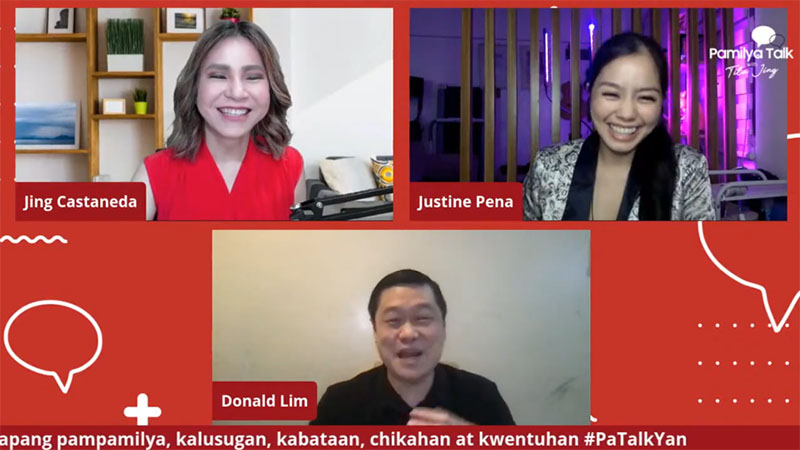What does it take to be a ‘responsible content creator'?


With captivating content, access to technology, and the basic right to free speech, millions of content creators and influencers have taken the digital world by storm, one viral video at a time. With “virality” comes influence. That’s why many are called “influencers.”
In the Philippines, influencers hold power. In a survey on social media influencers in October 2020, Rakuten Insight found that around 86.3% of respondents from the Philippines followed at least one influencer on social media. Consumers rely on content creators for important decisions like which clothes to wear, gadget to buy, company to support, movement to follow, and even who to vote for.
Because we have the mindshare of multitudes, content creators are easily public figures. We are constantly subject to criticism. Lately, we’ve seen how viral content can go downhill as fast as they rose. Comment sections ran wild with recent issues around Toni Gonzaga interviewing the late dictator Ferdinand Marcos' son Bongbong and Nas Daily including Apo Whang Od in Nas Academy.
We face the burning question, what does it take to be a "responsible content creator"?
In a lively Pamilya Mondays discussion, we tackled this rising concern with Creator and Influencer Council of the Philippines (CICP) founder Donald Lim, KUMU streamer and host Justine Pena, veteran journalist and University of the Philippines Diliman professor Danilo Arao, and debunking and reaction video creator Nico David.
1. Know your impact, be culturally sensitive
As content creators, the first thing we should note is this: Whatever we offer will have an impact on our audience in some way. We should not take the content we do for granted.
“You put something out there, you have to be responsible. Every time you post content, kahit isa lang follower mo, you are a content creator, literally, because you created a content with your PoV (point of view). Therefore, I think everyone should be responsible not only as a content creator but by being human and as a person in society,” declared Lim.
Content creators don’t always set out to influence others.
“When I started, I started with iyong show po ni Alden, yung Victor Magtanggol, doon po ako nag-start. So I’m just making funny content. Wala naman po akong aim noon, just to make fun of it and kaunting criticism na nakakatawa. And then one thing led to (another), and here I am,” David shared.
Responsible content creators are culturally sensitive and aware. By stating our opinion or posting seemingly harmless content, we may unconsciously or intentionally set out to harm a group of people. Often, they’re the marginalized groups who don’t have popular voices online.
Arao discussed how this played out during the Apo Whang Od and Nas Academy issue. “I think the main bone of contention there would be yung sa Whang Od Academy. Wala naman gaanong napag-usapan sa Academy ni Catriona Gray, Jessica Soho, mga brand influencers na nakuha ni Nas Daily. I think iyong isang fundamental na usapin kasi roon... kultura ng mga katutubo. So kung ikaw, kung papasok ka sa Pilipinas, dapat may sensitivity ka on the peculiarities of Philippine culture.”
One way to assess potential impact and ongoing cultural issues in content creation is to discuss with a group of peers.
Lim said, in CICP, for example, influencers and creators gather to discuss important topics during general membership meetings (GMM) held every two months. “Last GMM, ang pinag-usapan is yung role of influencers and creators in the time of the elections.”

2. Take cue from journalists, abide by a voluntary code of ethics
By knowing your impact, you know how best to create content while minimizing harm. By adhering to a voluntary code of ethics, you speak truth to power, a principle that many journalists seek to uphold.
“Kasi yung isang aspeto rin ng peryodismo, yung tinatawag nating ‘minimizing harm.’ Ang keyword is ‘minimize,’ hindi eradicate harm,” Arao discussed a fundamental aspect of journalism.
“Why do we need to minimize harm? Kasi kapag katotohanan yung binabanggit mo, kahit na merong nasasaktan, kahit na merong naooffend, kung totoo yung sinasabi mo, kailangan mong ipalaganap yan eh.”
Unlike advertisers, journalists, and media practitioners, content creators are not bound by any code of ethics. And unlike in other countries advertisements and paid partnerships in online content are not required to be explicitly tagged as ads or paid partnerships. As of this time, many activities conducted by content creators stand in moral and legal gray areas.
The lack of strong and deliberate regulation is a strong call for responsible creators to create with integrity.
“Hindi naman kailangang maghintay iyong anumang organisasyon para magkaroon ng code of ethics. In your own personal capacity, you can come up with your own guidelines,” advocated Professor Arao, citing existing ethical standards in journalism, entertainment, advertising, public relations, and blogging.
When asked about adhering to a personal code of ethics, David promoted common sense, critical thinking, and being human.
“Magpost ka ng something publicly -- makakasakit to ng tao, if yes, is it worth posting? Sa akin lagi, sa channel ko, I keep it simple,” David shares. “Pero sinabi nga ni prof [Danilo Arao] dito, meron talagang real talk na tinatawag. I-balance natin yun. Kung makakasakit naman tayo, make sure we are responsible sa consequences noon.”
David shared that many content creators do not abide by any ethical standard as exemplified by insidious videos such as food delivery and “I want a baby” pranks.
The lines between what content creators and journalists do often blur, but it is in learning their marked differences where both can serve the best interest of the general public.

Like everyone else, content creators consume content from multiple sources, too, and these can color the content we post online. So for us and the rest of our audience, Lim points out that responsible content consumption and responsible content interaction are just as important as responsible content creation.
--
Please watch Pamilya Talk on Facebook, YouTube, and Kumu (@JingCastaneda – 5:30-7:00 p.m. Monday, Tuesday & Wednesday). Please share your stories or suggest topics at jingcastaneda21@gmail.com. You can also follow and send your comments via my social media accounts: Instagram, Facebook, YouTube, Twitter and Kumu.



















